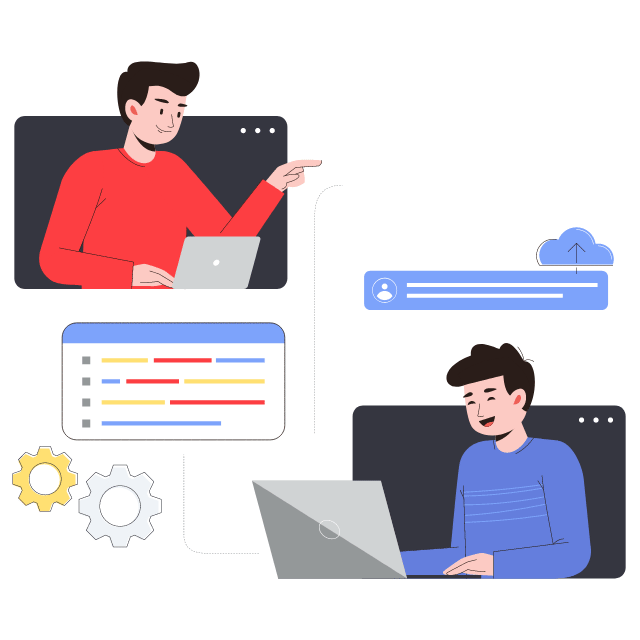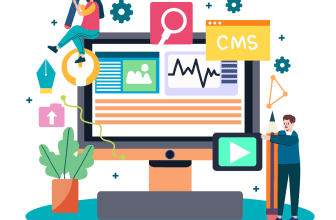Introduction to WordPress performance
As we enter 2023, WordPress continues to be the leading content management system (CMS) for website creation and management. With its user-friendly interface and extensive customization options, it’s no wonder that more than 40% of all websites are powered by WordPress. However, with great power comes great responsibility, and as a site owner, it’s crucial to ensure that your WordPress site is running at optimal performance.
Your site’s performance can make or break the user experience, influencing everything from user satisfaction to search engine rankings. In this article, we will explore the importance of website speed and performance, the factors affecting your WordPress site’s performance, and essential tips for optimizing your site in 2023. By following these recommendations, you’ll be well on your way to turbocharging your site and ensuring a smooth, fast user experience for your visitors.
Importance of website speed and performance
In today’s fast-paced digital world, website speed and performance are more important than ever. Users expect websites to load quickly and seamlessly, and they won’t wait around for a slow site. In fact, studies have shown that a one-second delay in page load time can lead to a 7% decrease in conversions, an 11% decrease in page views, and a 16% decrease in user satisfaction.
Moreover, website speed and performance play a significant role in search engine optimization (SEO). Search engines like Google prioritize fast-loading sites in their rankings, rewarding those that provide a superior user experience. By optimizing your site’s performance, you can improve your search engine rankings and drive more organic traffic to your site.
In short, a fast and efficient website is essential for maintaining user satisfaction, increasing conversions, and improving your search engine rankings.
Factors affecting your WordPress site’s performance
There are several factors that can affect the performance of your WordPress site, including:
Web hosting: Your hosting provider plays a crucial role in your site’s performance, as it determines the speed and reliability of your site’s server.
Plugins and themes: The plugins and themes you choose for your site can have a significant impact on its speed and performance. Some can be resource-intensive, slowing down your site, while others can contain poorly written code that causes performance issues.
Images and media files: Large, unoptimized images and media files can significantly increase your site’s load time, negativelyaffecting the user experience.
HTTP requests and file sizes: Every time a user accesses your site, their browser sends requests to the server to load various elements, including images, scripts, and stylesheets. The more requests the server receives, the longer it takes to load the page.
Databases: Your site’s database stores all the information about your site, including content, user data, and settings. Over time, databases can become bloated with unnecessary data, slowing down your site.
By understanding these factors, you can take steps to optimize your site’s performance and ensure that it runs at its best.
Essential tips for optimizing your WordPress site in 2023
To help you optimize your WordPress site for peak performance in 2023, we’ve compiled a list of essential tips that you can implement today.
1. Choosing a fast and reliable hosting provider
Your hosting provider is the backbone of your site, and choosing the right one is crucial for ensuring optimal performance. Look for a provider that offers fast, reliable servers with minimal downtime. Shared hosting may be cheaper, but it can be resource-intensive, leading to slower load times. Consider upgrading to a dedicated or VPS hosting plan for faster speeds and more control over your server.
2. Utilizing a content delivery network (CDN)
A content delivery network (CDN) can help reduce the load on your server by storing your site’s files on multiple servers around the world. This means that users can access your site from the server closest to them, reducing latency and improving load times. There are several CDN providers available, including Cloudflare, Amazon CloudFront, and MaxCDN.
3. Implementing caching techniques
Caching is a technique that stores frequently accessed data in temporary storage, allowing it to be quickly retrieved when needed. WordPress has several caching plugins available, including WP Super Cache and W3 Total Cache, that can help improve your site’s load times by caching frequently accessed pages and files.
4. Optimizing images and media files
Images and media files can significantly increase your site’s load times, so it’s essential to optimize them for the web. Use image compression tools like WP Smush to reduce file sizes without sacrificing quality. Additionally, avoid using large, unoptimized media files, and consider using video hosting services like Vimeo or YouTube for large video files.
5. Minimizing HTTP requests and reducing file sizes
Reducing the number of HTTP requests and file sizes can significantly improve your site’s load times. Minimize the use of scripts, stylesheets, and fonts, and combine them into a single file where possible. Additionally, use Gzip compression to reduce file sizes and reduce the amount of data that needs to be transferred between the server and user.
6. Using a lightweight and responsive theme
Your theme can have a significant impact on your site’s speed and performance. Choose a lightweight and responsive theme that is optimized for speed and mobile devices. Avoid themes with unnecessary features and bloated code that can slow down your site.
7. Regularly updating plugins and themes
Keeping your plugins and themes up-to-date is crucial for maintaining optimal performance and security. Outdated plugins and themes can contain security vulnerabilities and poorly written code that can affect your site’s performance. Ensure that you regularly update your plugins and themes to the latest versions.
8. Limiting the use of plugins
While plugins can add valuable functionality to your site, too many can slow it down. Limit the number of plugins you use, and only use those that are essential for your site’s functionality. Additionally, remove any plugins that you no longer use or need.
9. Implementing lazy loading for images and videos
Lazy loading is a technique that delays the loading of non-critical elements, such as images and videos, until the user scrolls to them. This can significantly improve your site’s initial load time and reduce the amount of data that needs to be transferred.
10. Fixing broken links and optimizing databases
Broken links and bloated databases can significantly affect your site’s performance. Use a broken link checker to find and fix any broken links on your site. Additionally, optimize your site’s database regularly to remove any unnecessary data and improve its performance.
Performance testing tools for WordPress
There are several performance testing tools available for WordPress that can help you identify areas where your site can be optimized. These include GTmetrix, Pingdom, and Google PageSpeed Insights. These tools analyze your site’s performance and provide recommendations for improving its speed and user experience.
Case studies of successful WordPress performance improvements
Implementing these tips can significantly improve your site’s performance, as demonstrated by several case studies. For example, WPBeginner was able to reduce their load time by 50% by switching to a faster hosting provider and implementing caching and image optimization techniques.
Another case study by Kinsta showed that implementing lazy loading and optimizing images improved their site’s performance by 20%.
Conclusion: Emphasizing the importance of continuous optimization in 2023
Optimizing your WordPress site for speed and performance is an ongoing process that requires continuous monitoring and adjustment. By implementing the essential tips outlined in this article, you can ensure that your site runs at its best and provides a superior user experience for your visitors. Regularly test your site’s performance, and make adjustments as needed to keep up with the changing demands of the digital landscape.









